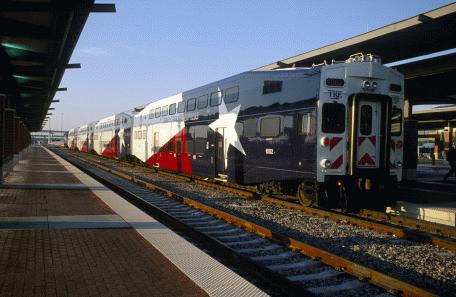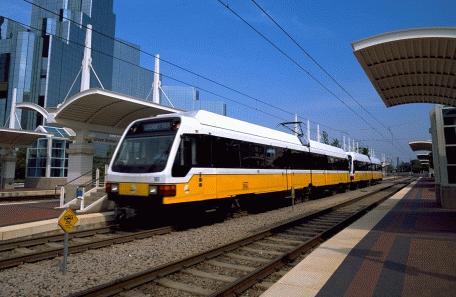Commuting Passenger rail: commuter rail light-rail
by Brian
Comments Off on The difference between commuter rail and light-rail
The difference between commuter rail and light-rail
Commuter rail typically uses large, Amtrak-style trains running at fairly high speeds on completely dedicated right-of-way with widely spaced stops and schedules more oriented to twice-a-day commuters, meaning midday and weekend service is infrequent or even non-existent. This is the type of service planned between San Antonio and Austin.
Light-rail (LRT), on the other hand, uses smaller, lighter vehicles (thus the term “light” rail) that more closely resemble large streetcars than they do “regular” trains, run at somewhat slower speeds, often run in dedicated rights-of-way but sometimes run on streets, have rather closely-spaced stations or stops, and have fairly frequent schedules and short headways (time between trains) all day long. This is the type of service that is being proposed by VIA for San Antonio and Bexar County.
Some other differentiations: commuter rail trains are much longer than LRT trains and connect the central city to the suburbs while LRT trains typically run mostly within the central city. Also, commuter rail trains are frequently diesel-powered, while LRT trains are almost always electric-powered.
Of course, just to confuse things, there are exceptions, including one just 70 miles up the road (or track as it were): Austin’s new MetroRail commuter rail service, which is scheduled to finally debut in a few months, will use diesel-powered LRT style trains for a commuter rail type service.
So I hope that helps clarify things a bit. Originally, this post was going to explain all the different types of local urban passenger rail, but that got unwieldy quickly. If you want to learn about the different types of rail systems, Wikipedia has a nice overview here.
Also see “How does commuter rail differ from light rail and heavy rail?”

